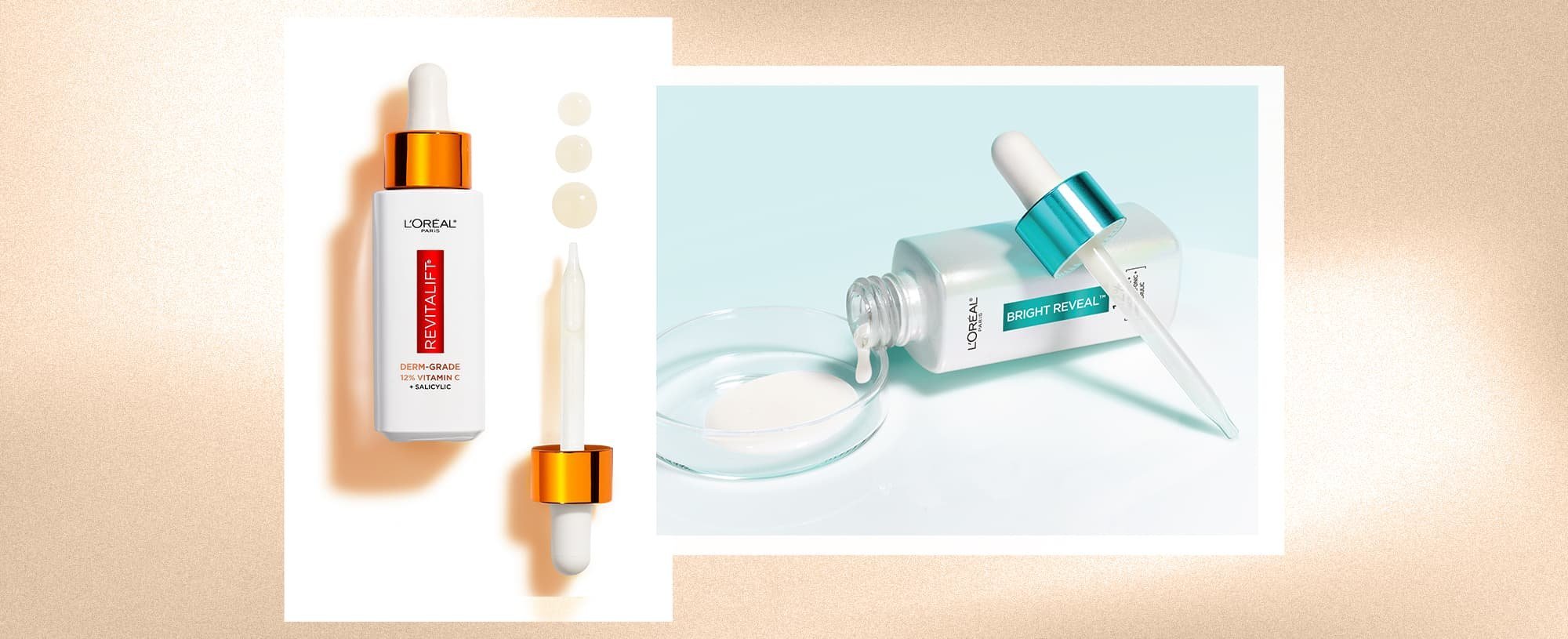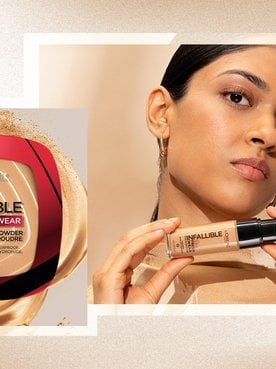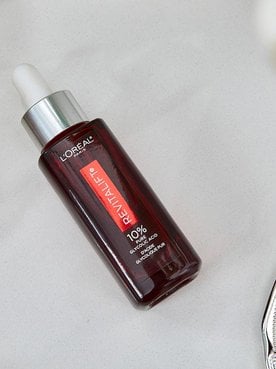If you’re a beauty devotee, chances are good you’re familiar with at least some of the ingredients in your favorite products and how they work. But let’s be real: Even the savviest skincare lover may need some guidance on layering certain ingredients. The pairing of niacinamide and salicylic acid is one that many seem to be particularly curious about.
As you may know, salicylic acid is one of the most popular ingredients for addressing breakouts, while niacinamide can help target skin concerns like enlarged pores and discoloration. And while you can use them together, it’s important to know how to do so correctly. Ahead, we’re sharing what you need to know about how niacinamide and salicylic acid interact and how to combine them for healthy-looking skin.
What Does Niacinamide Do?
Niacinamide is a form of vitamin B3 that can help maintain healthy-looking skin when used topically. (You may also hear niacinamide referred to as niacin, nicotinic acid, or nicotinamide, but they all refer to the same thing). According to Michelle Henry, MD FAAD, board-certified dermatologist and L’Oréal Paris consultant, niacinamide contributes to moisturizing the skin, helps fortify the skin’s barrier, and can help reduce inflammation. The soothing ingredient also works to calm redness, fade the appearance of dark spots, mattify oily skin, improve the look of wrinkles, and more, per the Cleveland Clinic.
As if those perks weren’t compelling enough, Dr. Henry notes that niacinamide tends to play well with other ingredients, which is why you’ll often see it appear in serums, moisturizers, and even some sunscreens.
You can find niacinamide in our L’Oréal Paris Bright Reveal 12% [Niacinamide + Amino Sulfonic + Ferulic Acid] Dark Spot Serum, which helps visibly fade all types of dark spots.
Shop the Products
What Does Salicylic Acid Do?
Salicylic acid is a beta hydroxy acid (BHA) used to help manage acne, though that’s not all it’s good for. According to the Food and Drug Administration (FDA), BHAs can help improve skin’s overall texture sans the irritation of harsher chemicals.
“Salicylic acid is an anti-inflammatory ingredient [that] also exfoliates the skin,” Dr. Henry expands here. This effect, she says, can help brighten the skin, reduce dark spots, help with skin cell turnover (by removing the dead ones), and unclog pores.
What makes salicylic acid so effective, per the Cleveland Clinic, is that it can get deep into the pores much more so than water-soluble ingredients. This means it can go after blackheads and whiteheads, which can be challenging to extract and minimize without the right treatments. And like niacinamide, it tends to be well-tolerated by most skin types (especially at lower concentrations).It’s worth noting that salicylic acid can increase skin’s sensitivity to the sun, per the FDA. As such, you’ll want to protect your skin every day with broad-spectrum sunscreen when using this ingredient. Look for one with an SPF of at least 15 and reapply every two hours.
If you want to introduce your skin to salicylic acid, one option is our L’Oréal Paris Revitalift Derm Intensives 12% Pure Vitamin C + E + Salicylic Acid Serum. It instantly increases visible radiance and helps reduce the appearance of enlarged pores and fine lines.
Shop the Products
Can You Use Niacinamide With Salicylic Acid?
Using niacinamide with salicylic acid together is generally regarded as safe. In fact, these ingredients may help one another penetrate the skin better. That being said, if you’re unsure about whether products in your routine are compatible with one another, consult your dermatologist. They can provide personalized guidance and help build a skincare routine that works for you.
Benefits of Using Niacinamide and Salicylic Acid Together
As we mentioned above, salicylic acid can help reduce breakouts, minimize the appearance of enlarged pores, and gently exfoliate the skin, while niacinamide can calm redness, hydrate the skin, and help improve texture and tone. Since they target skin concerns that often overlap (like unevenness and redness), some choose to use these powerful ingredients together—either within a single product or by layering them at different points in their routine. Many find that this combination is helpful in keeping their skin even-looking and balanced.
How To Use Niacinamide and Salicylic Acid Properly
It’s no secret Dr. Henry is a fan of niacinamide, as she told us. “Niacinamide is one of those ingredients like ceramides,” she says. “It plays really well with other ingredients.” This makes it easy to layer and cocktail with other actives, but that begs the million-dollar question: Should you apply salicylic acid or niacinamide first?
There is no hard and fast “rule” agreed upon by all experts and studies on which ingredient should always go first and which should go second. An easy guideline to follow is to apply the lightest skincare layers first. You’ve probably heard the routine of toner, serum, and moisturizer, which follows this pattern perfectly. That said, both niacinamide and salicylic acid can potentially be found in all three of these product types. (If it’s not clear by now, they’re both pretty popular!) Follow the general rule of thumb by going from thinnest to thickest product, even if sometimes it’s salicylic acid first and other times it’s niacinamide.
You could, for instance, use a toner infused with salicylic acid (such as L'Oréal Paris Revitalift Derm Intensives 5 Percent Glycolic Acid Peeling Toner), followed up with a nourishing serum featuring niacinamide.
Or, you could layer serums that feature both ingredients, such as L’Oréal Paris Revitalift Derm Intensives 12% Pure Vitamin C + E + Salicylic Acid Serum and L’Oréal Paris Bright Reveal 12% [Niacinamide + Amino Sulfonic + Ferulic Acid] Dark Spot Serum, for a dream team duo.
If your moisturizer features one or both of these ingredients, that’s great, too. For a fantastic daytime moisturizer featuring niacinamide, try L’Oréal Paris Bright Reveal Broad Spectrum SPF 50 Daily UV Lotion; and for evenings, go with L’Oréal Paris Revitalift Pressed Night Moisturizer with Retinol + Niacinamide to help brighten the skin for a healthier-looking complexion.
Shop the Products
Niacinamide and Salicylic Acid: The Bottom Line
Some things are just better together, including niacinamide and salicylic acid. Even so, everyone’s skin is unique and has different needs. If you have specific questions or concerns, visit your dermatologist to help you discern whether this pairing is right for you.







